
Your complete guide to whale watching from Sydney Australia
If you’re spending time in Sydney, Australia, in the winter, the one thing you need to have on your list of must-do’s is a whale-watching tour. This spectacle of nature is an incredibly memorable experience that can bring you up close and personal to some of the biggest creatures of the sea.
The humpback whale-watching tours are perfect for tourist, photographers and locals alike. You’ll be in for a treat, seeing these up to 40-tonne mammals gracefully move through the water and even breach in one of the most impressive displays in nature.
Before you rush to book your whale-watching boat tour, or grab your binoculars and head out to a popular lookout spot, we’ve put together your completed list of the most common whale-watching questions we get asked.
When is whale watching season in Sydney, Australia?
The whale watching season in Sydney runs through the winter between the middle of May and the end of November. This phenomenon happens because of the annual whale migration from the Atlantic to warmer waters of the tropical pacific ocean. You can see whales anytime between May to November from the land, and especially at sea.
Where do humpback whales migrate to and from when passing Sydney?
Every year, humpback whales migrate past Sydney, Australia, leaving their food-rich waters of the Atlantic ocean. This migration is part of their annual trip that takes them from their summer feeding grounds in Antarctica to their winter breeding grounds in the tropical waters of the pacific ocean. During this journey, they travel thousands of miles and pass through Sydney on their way north or south.
Where are the best places for whale watching in Sydney?
The best place to see whales is by boat. Whale-watching tours will get you close to the action and are the closest vantage point you could get next to these mammals. Boats have proximity restrictions in place by the New South Wales government. Personal watercraft and whale watching tours are required to keep minimal wash and a distance of 100m from the whales. If the whale has calves, they must stay 300m away.
If you can’t make it out to the ocean on a cruise to see whales, the best places on land for whale watching in Sydney are anywhere along the coastline. Some of our favourite spots are the Mackenzie’s Point lookout near Bondi Beach, North Head lookout near manly, Watson’s Bay lighthouse and the Royal National Park. In these locations, you can find a viewing point from a cliff and get an excellent spanning view of the ocean. One of the most popular spots to view whales from the land around Sydney is Cape Solander lookout, found in Kamay Botany Bay National Park, Kurnell. This location attracts over 200,000 visitors yearly looking to watch the whale migration. The area has recently been renovated and has now been reopened in 2022 to the public.
What kinds of whales can I see around Sydney?
The types of whales you can see around Sydney include humpback whales, southern right whales, minke whales, sperm whales, blue whales and, on rare occasions, even orcas (killer whales).
On the coast of Australia, it’s also common to see all sorts of other aquatic animals. Along with the variety of whales migrating, you may also spot pods of dolphins, and seals from the surface of the water.
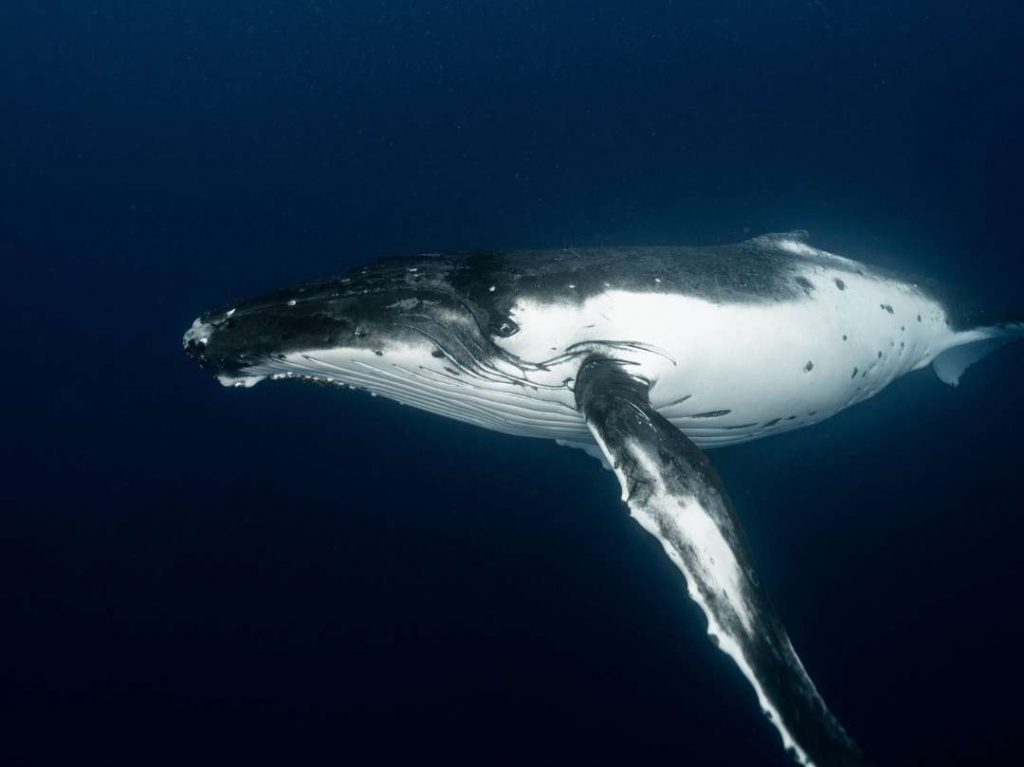
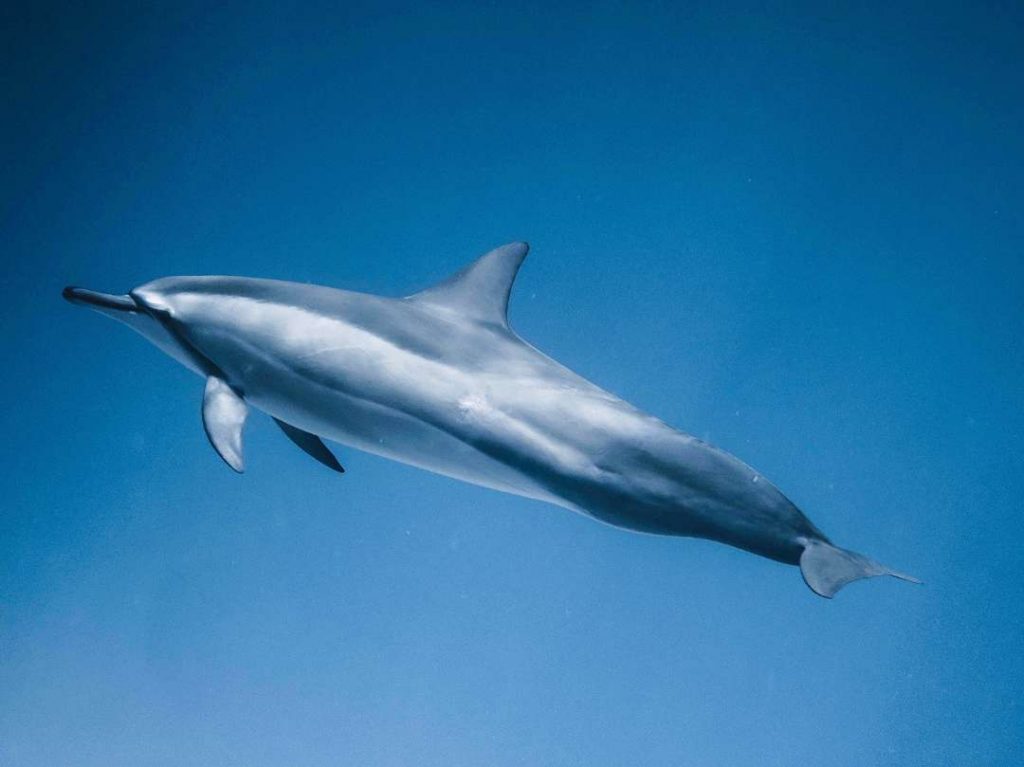
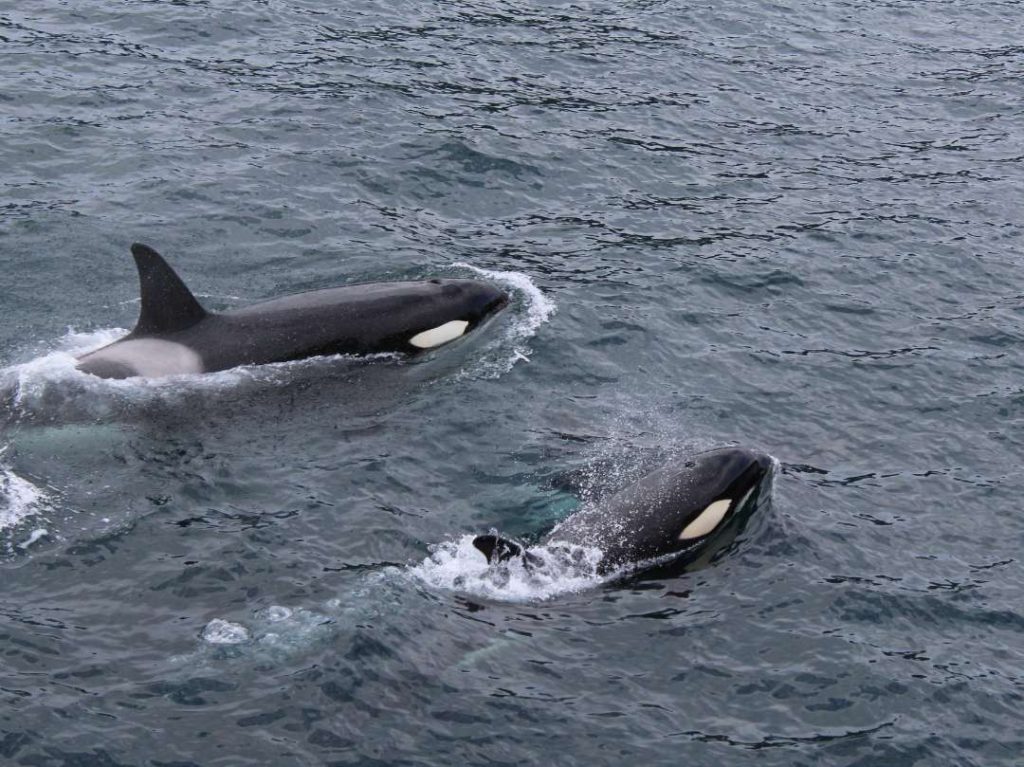
What are the best times in the day for whale watching in Sydney?
The best times of day for whale watching are early morning or late afternoon when the sun is low on the horizon and visibility is good.
Ready to go whale watching?
What’s the noise a humpback whale makes?
The familiar sound humpback whales make is referred to as a song. This iconic sound of the ocean is named a song, as the noise they make is repeated. The phrase can go on for a few minutes at a time.
On a whale-watching tour, you may be able to hear these songs if you’re lucky! Unfortunately, as the noise is made under the water, it typically cannot be heard above the surface of the water.
How long can humpback whales grow, and how much do they weigh?
Humpback whales can grow to be as long as a bus. Their length can be anywhere from 14-18m in length as an adult. An adult whale can weight up to 40 tons. Whale calves are typically much smaller, around 3-5m in length, and can weigh up to one ton.
How far is the humpback whale migration that passes through Australia?
The humpback whale migration starts from the Antarctic ocean and continues up to the warmer water in northern Australia. This journey is one of the longest migrations in the world and typically is 5,000 kilometres each way and 10,000 kilometres in total.
Why do whales surface above the water?
Unlike fish who have gills that process oxygen, whales and mammals have lungs and need air to breath to process oxygen. They surface to take a deep breath then descend back under water.
How long can humpback whales hold their breath?
The maximum amount of time a whale can hold it’s breath is thought to be close to an hour. On average, we typically see whales surfacing ever 5-10 minutes.
What’s the best way to spot a whale in the water?
To spot a whale in the water, look for its spouts of water or tails as they surface to breathe. You’ll notice this as a spurt of water that will stand out differently from the blue of the water. If you’re lucky enough to see them breach out of the water, this massive mammal can’t be mistaken.
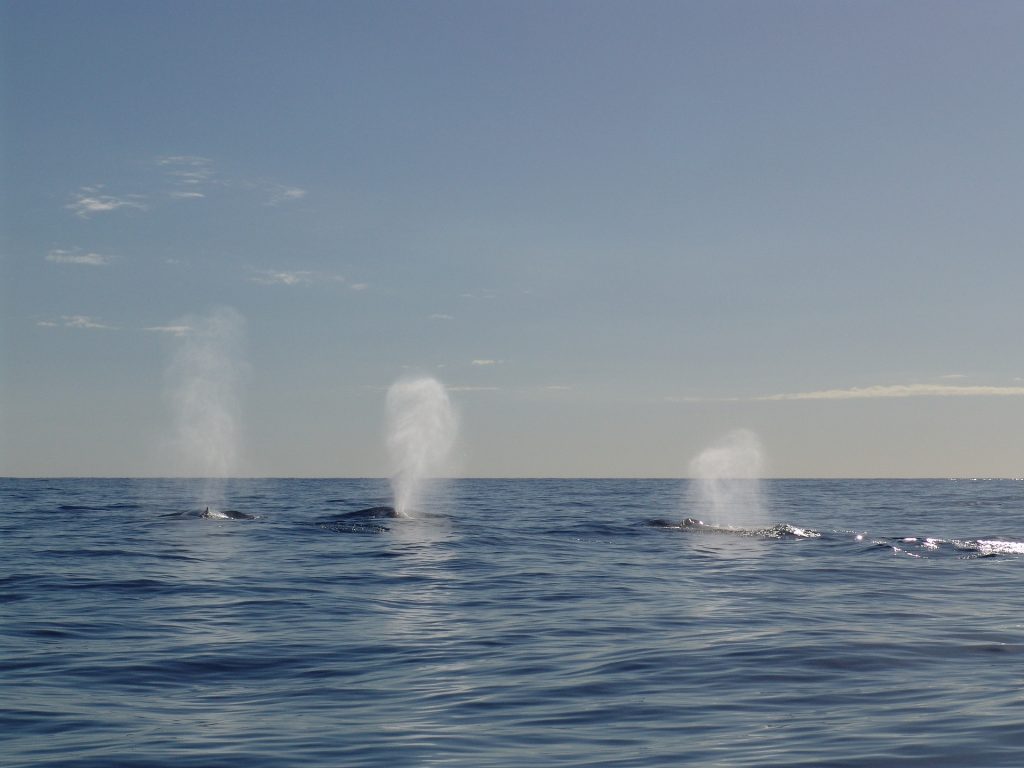
Ready to go whale watching?
How many whales migrate past Sydney each year?
From May to November, it’s estimated that over 40,000 – 60,000 whales migrate past Sydney. This group of whales is a mix of humpback and southern right whales. This number is estimated to increase annually by roughly 10% annually.
What are baby humpback whales called?
Baby humpback whales are called calves, and they usually stay close to their mothers until they reach maturity at around five years old.
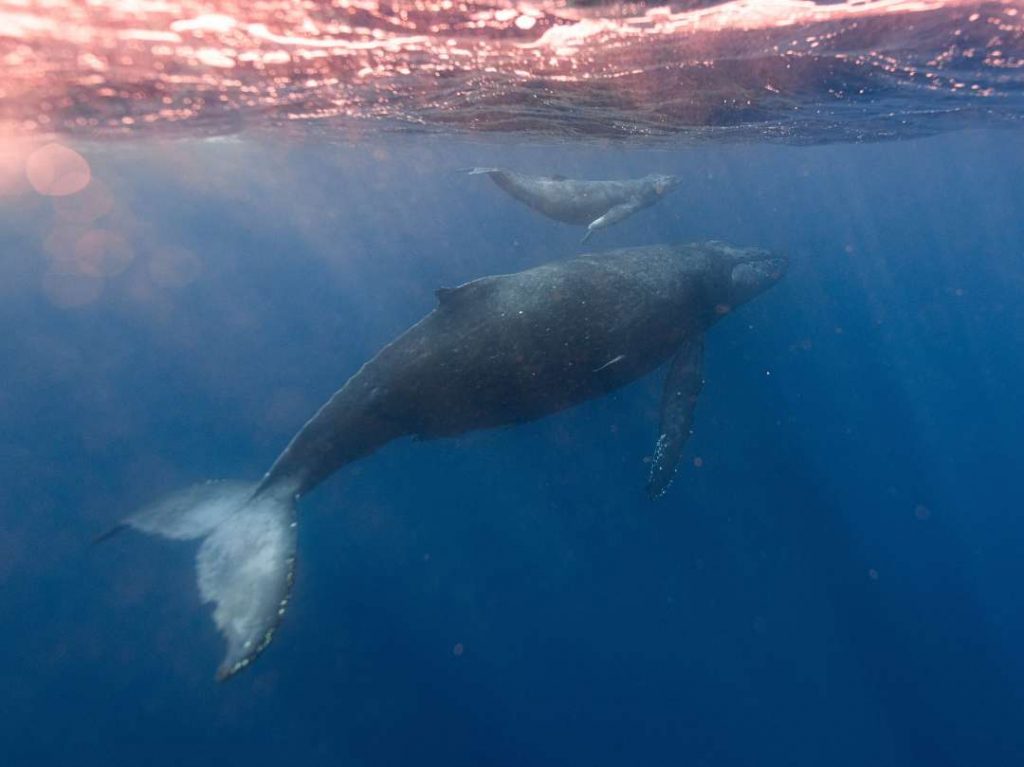
How many calves does a humpback whale have at a time?
Humpback whales typically give birth to one calf at a time. The calf will stay with its mother for up to a year, learning to feed and survive in the ocean. The mother will nurse and protect her calf from predators during this time.
What is it called when a whale jumps out of the water?
When humpback whales jump out of the water, it is called breaching. This behaviour is often seen during migration as they travel through Sydney’s waters. Breaching is thought to be a form of communication between whales or a way for them to get rid of parasites on their skin. It can also be used as an impressive display of strength and agility that male whales display during mating season.
Now that all your questions have been answered, are you ready to see them in person? Follow the links above to a lookout near you, or if you want to see whales on the water, book a ticket on one of our favourite whale-watching tours around Sydney.
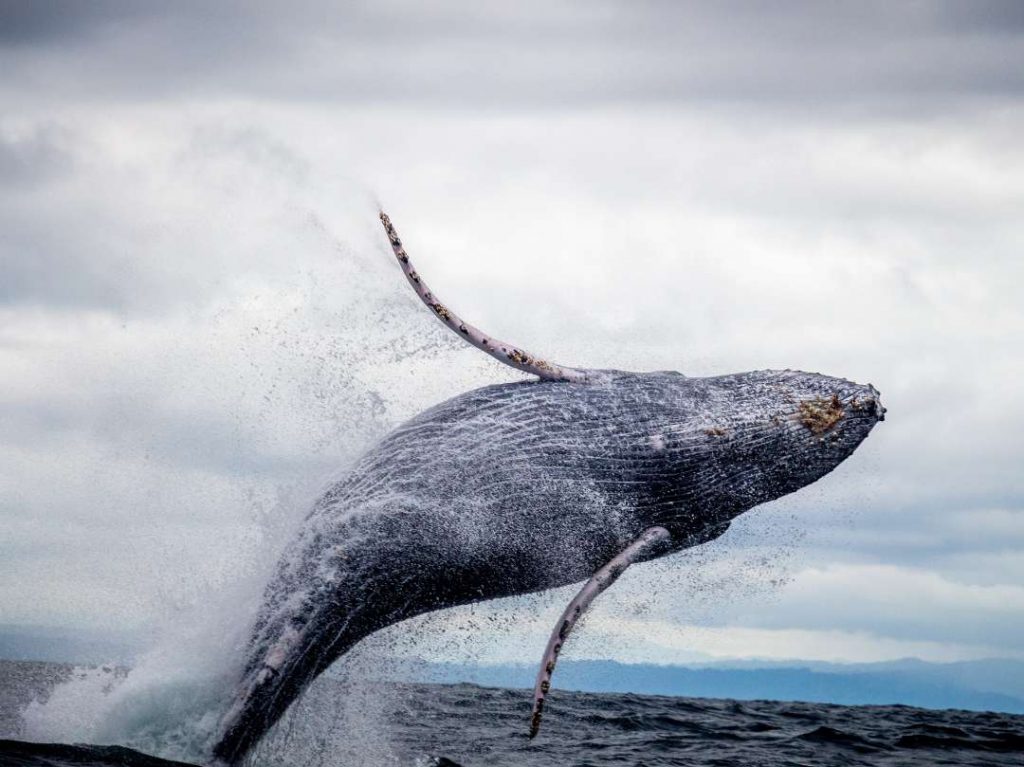
What are the best whale-watching cruises I can do from Sydney?
From Sydney, you can join many different companies that run whale-watching cruises. You can see some of the most popular whale-watching cruises here. The tours offer different experiences depending on what you’re looking for and hoping to see. We have a variety of smaller group to larger boat whale-watching tours that vary in length of the tour and time of departure.
What should I bring on a whale-watching tour?
As the whale watching tours are out at sea, dress appropriately depending on the weather. We recommend you bring warm clothing and a wind or rainproof jacket to protect you from the elements on the open ocean.
Where do Sydney whale watching tours go to see whales?
The boat tours will go past the head of Watson’s Bay and Manly to head out to the open ocean. This is the best place to see whales off the coast of Sydney.
Are there whales in Sydney Harbour?
There are no whales to be seen in Sydney Harbour. On rare occasions, they have found their way into the harbour, but they typically stick to the coastline and don’t make it in the past the heads.
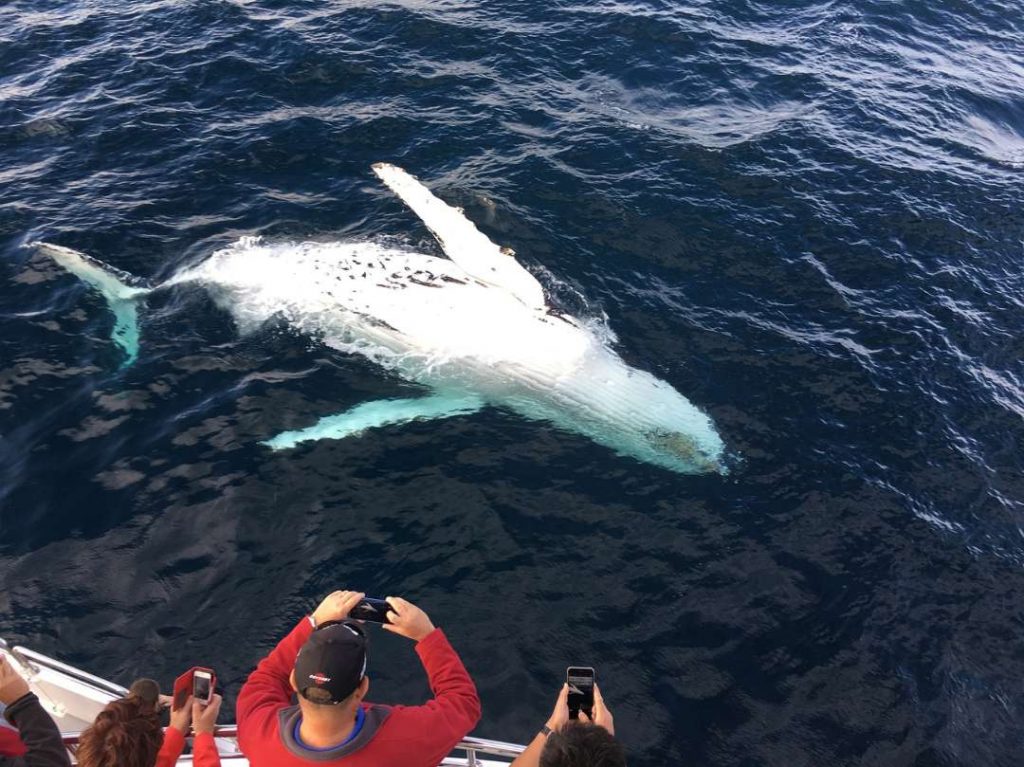
Now that you’re an expert, are you ready to see them in person? Follow the links above to a lookout near you, or if you want to see whales on the water, book a whale watching tour on one of our favourite boats from Sydney.